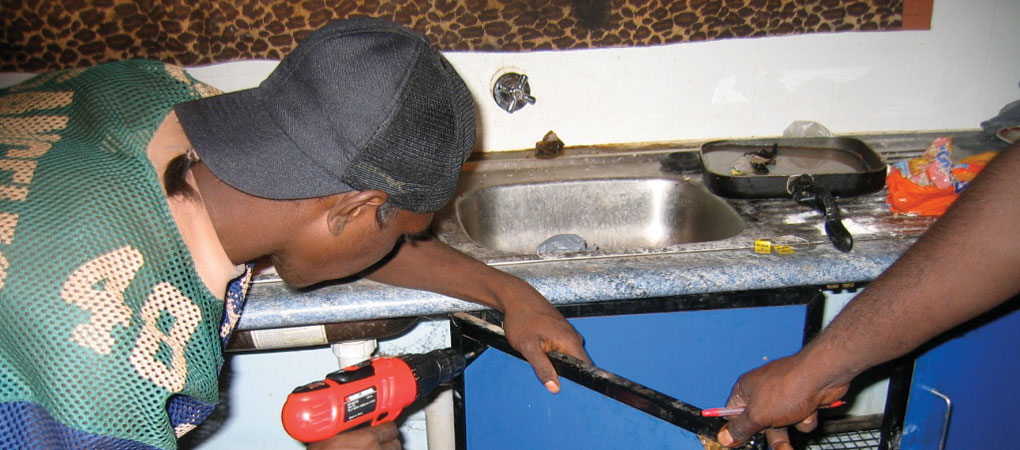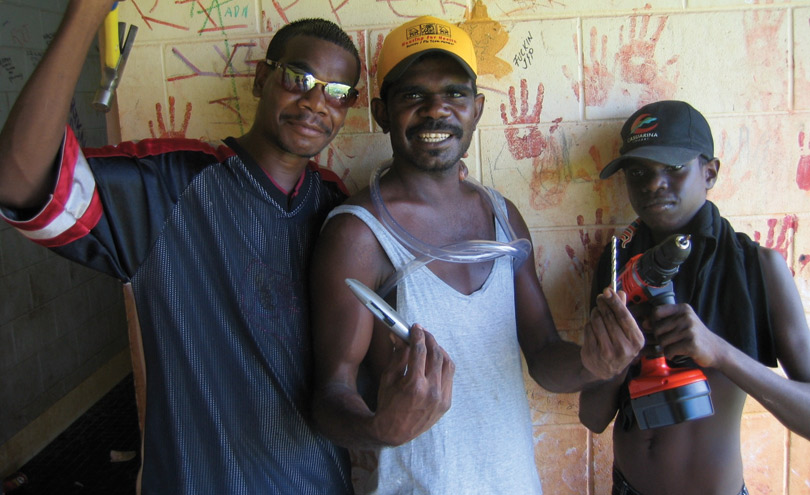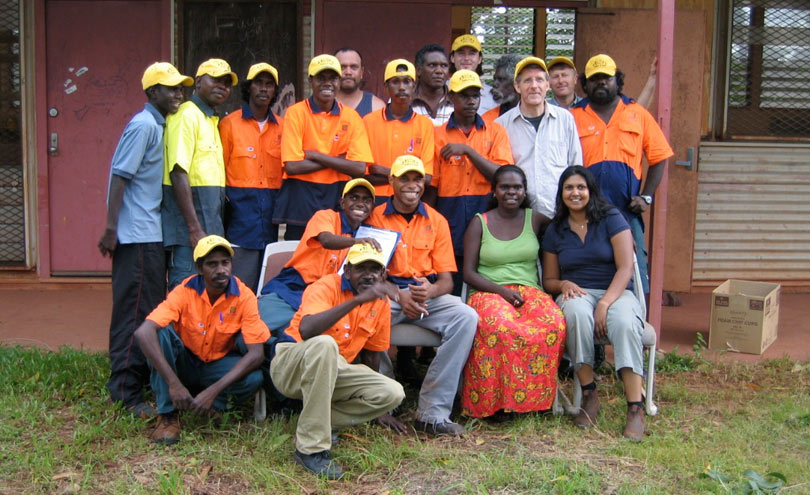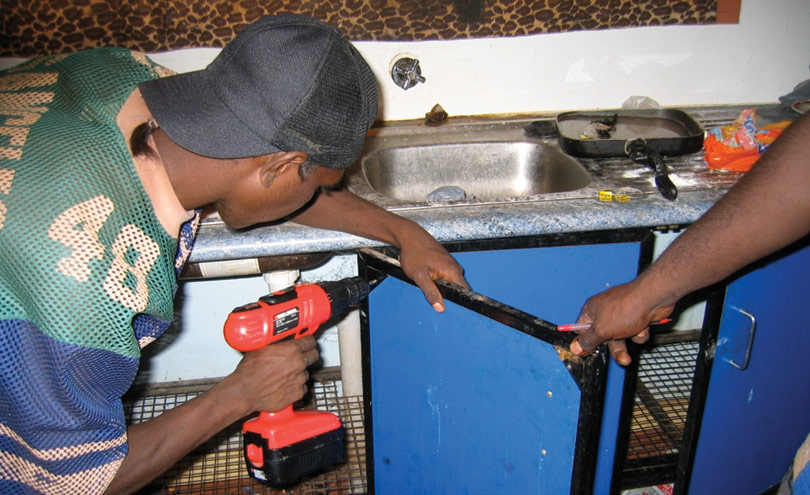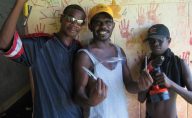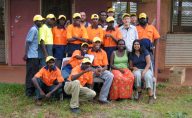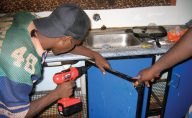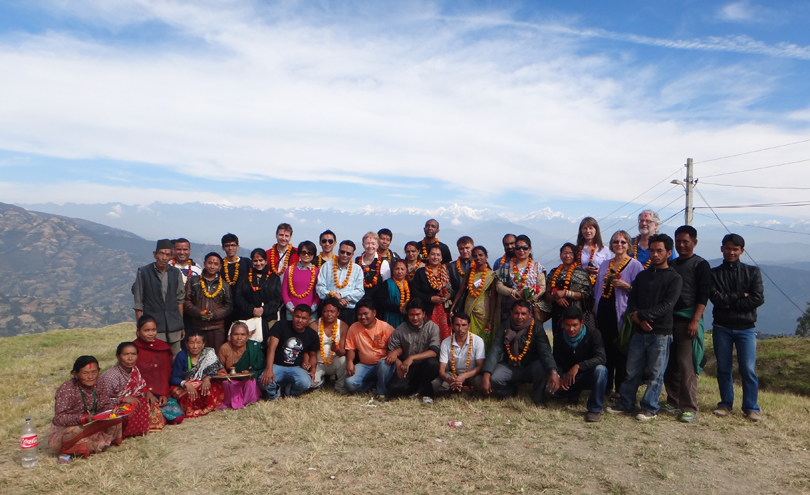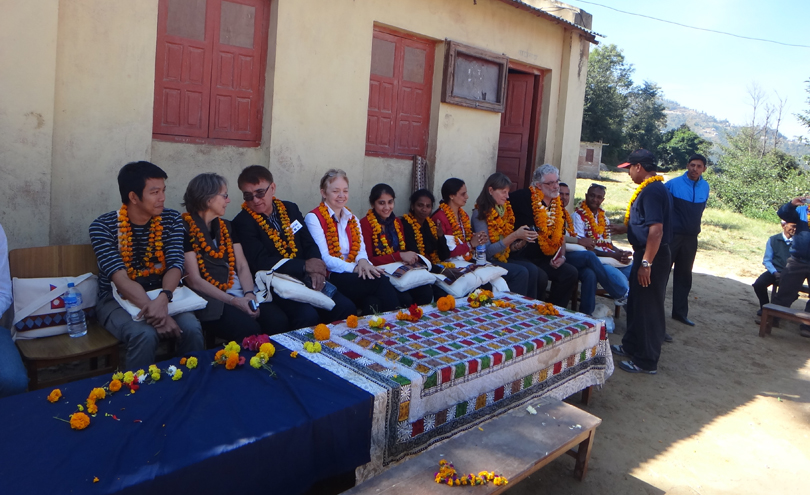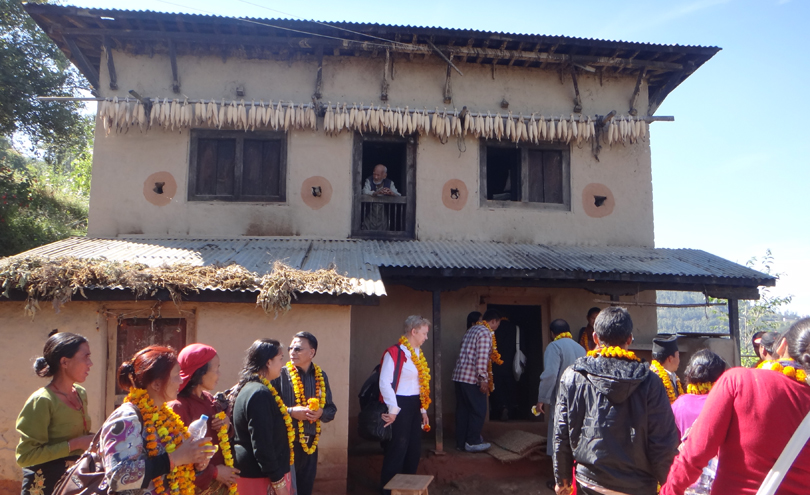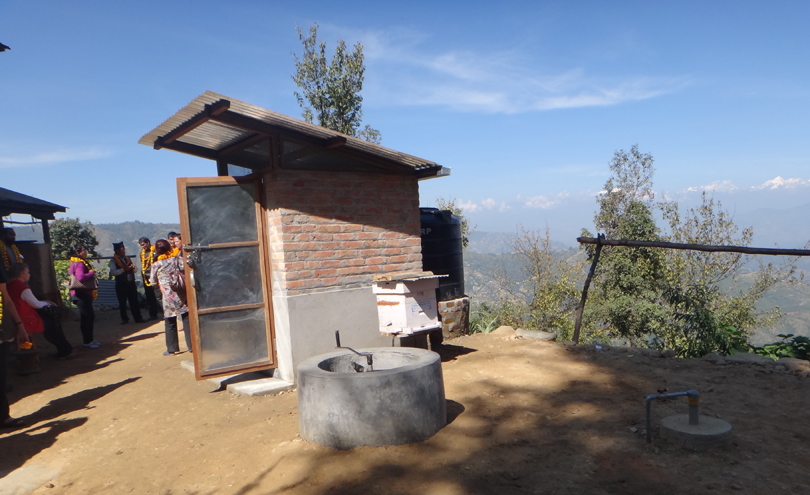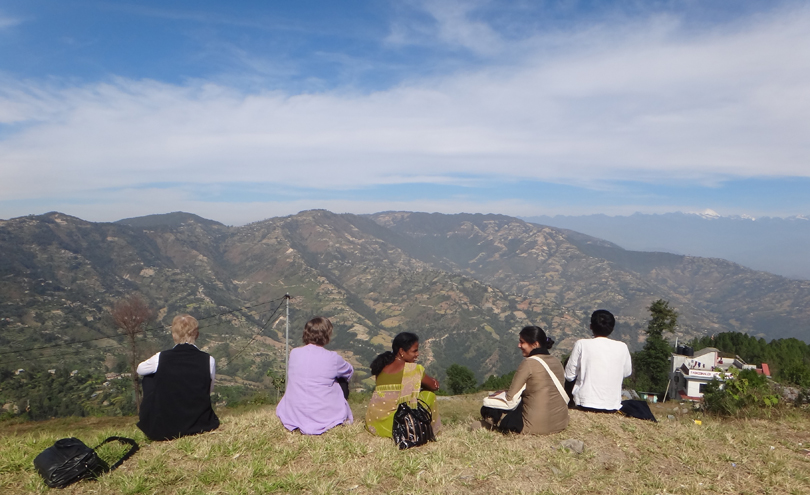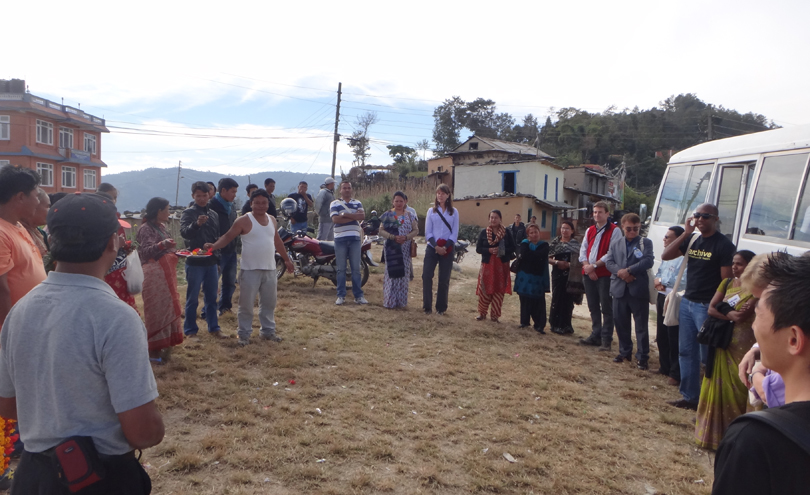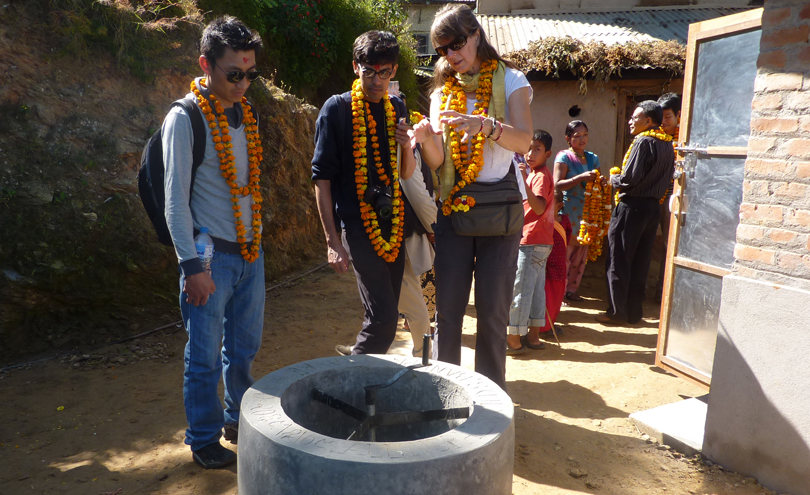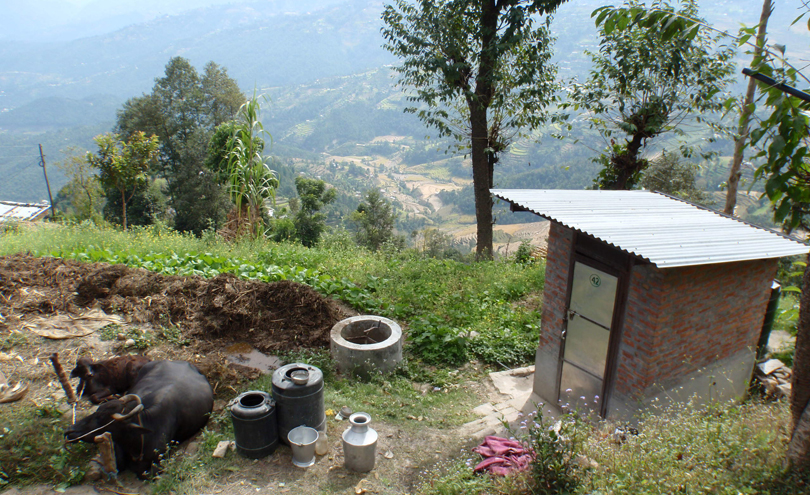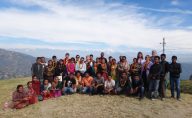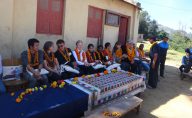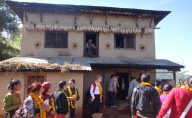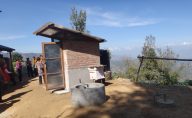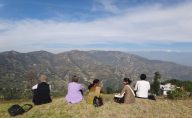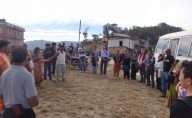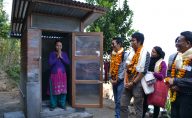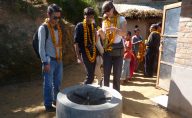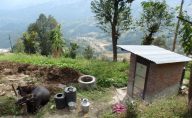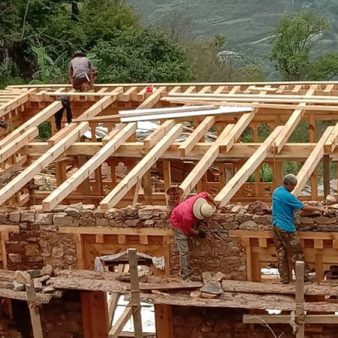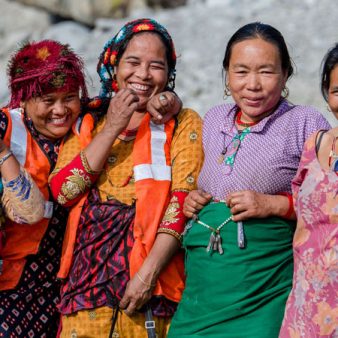Project Description
Aims and Objectives
To improve the health of indigenous people, by ensuring they have access to a safe and well functioning house, and an improved living environment.
Context
There is a long history of abuse, mistreatment and misunderstanding of the indigenous people of Australia, not least when it comes to the provision of appropriate housing. Indigenous people live in very poor housing conditions and where the state provides housing, it is not designed with any understanding of the way of life or cultural needs of these communities. The common view is that the indigenous people ‘trash’ the good homes provided for them and do not deserve decent housing provision. The houses are often in disrepair and there are high levels of rent arrears.
Many indigenous people have low literacy rates as well as a pattern of poor health characterised by high rates of infectious disease and very high rates of diabetes, vascular disease and obesity. Skin infections, respiratory diseases, rheumatic fever, rheumatic heart disease and ear disease in children also occur at much higher rates than in the non-indigenous population. Life is typically lived in harsh, remote and often chaotic conditions. Housing is usually provided by local or state governments or indigenous community organisations and is of poor quality with little, if any, maintenance or good management.
Key features
Healthabitat works with local indigenous communities to repair existing homes and train local people in basic repair and maintenance skills. It has two main areas of work – the HfH projects and the associated applied research and development projects. The safety and nine Healthy Living Practices were developed in the mid 1980s to describe the functioning hardware needed in a house to allow access to healthy living. These practices include: life threatening safety issues, washing people, washing clothes and bedding, removing waste water safely, improving nutrition with the ability to store, preparing and cooking food and reducing the health impacts of dust. Nominations for inclusion in the programme come from communities themselves, as well as indigenous housing boards and Indigenous Affairs departments. After a feasibility study and if the communities wish to participate, a Survey-Fix week is set aside and a number of local community members are trained to work alongside technical staff to inspect, test and record about 240 items in the houses, and where possible make repairs. The information on each house is entered onto a database and work lists are given to qualified trades people who carry out urgent repairs a day later. Other repairs are completed over the following months and a second Survey-Fix session is carried out to review the work.
One hundred and eighty four HfH projects have been carried out all around Australia, with over 7,300 houses improved to date. Seventy-five per cent of all project staff are local indigenous people and the paid work they carry out includes project planning, training of staff, testing and repairing houses, assisting licensed trades people with major repair work, data entry and office work and liaison with householders in their own language about the aims and methods of the programme. Survey groups are trained in a short time to test houses and record the results, using a carefully prescribed methodology. While they are in a house they will also fix minor faults (a dripping tap, a missing stove control knob or basin plug etc.) driven by the philosophy of ‘no survey without service’ and make a report for the skilled tradesmen who make an immediate start on sorting out those things that the groups are not entitled to fix. The effort required to achieve this engagement is rarely understood by government agencies and bureaucrats and successful and appropriate means of working have been developed over the years.
Healthabitat has also initiated a broad range of applied, practical research projects to improve housing, covering issues such as development of tap ware, hot water systems, waste disposal systems, lighting, kitchen design, prefabricated transportable shower, laundry and toilet modules, local indigenous staff training aids and customised database and information systems.
Covering costs
By Australian standards, HfH is a low-cost programme. From 1999 to 2009, projects had an average cost of US$7,500 per house for all works including repair work, management, staff wages, building materials and transport. This is helped by the Healthabitat organisation itself having very low overheads.
Since 2006, approximately 15 per cent of the national HfH budget has been allocated to research and development projects.
Impact
- Over 180 HfH projects have improved more than 7,000 houses with poor function since 1999 and improved the living conditions of over 40,000 indigenous people. This represents one third of the nation’s indigenous housing stock.
- A recent state government health department review of ten years of HfH work showed a 40 per cent reduction in hospital admissions for environmental health related illnesses.
- The use of data generated by HfH projects over the years now informs the National Indigenous Housing Guide – now nationally accepted as an essential design guide for the construction and refurbishment of indigenous housing.
- The current National Partnership Agreement for Remote Indigenous Housing being delivered nationally across Australia has incorporated the nine Healthy Living Practices. Ongoing work is being carried out to ensure that implementation of the policy is delivered. Whilst indigenous community housing organisations are happy to take on the ideas, there is a greater struggle to ensure that state landlords do so (with some notable exceptions).
- HfH project data is regularly updated and made available by Healthabitat to the Australian Institute of Health and Welfare (a Federal Government agency) who package and place the data online for use by registered housing and health researchers.
Why is it innovative?
- Developing the HfH methodology with standard repeatable tests to assess the safety and health function of housing.
- Policy of immediate repair work that improves houses from the first day of a project and builds community trust.
- Continual monitoring, development and refining of the Healthy Living Practices over 25 years, reinforces the links between health, housing function and the broader living environment.
- As monitoring health gain on each project can be costly and disruptive, HfH projects use the detailed housing function data collected before repair work commences and similar data after all repair work has been completed.
- Community involvement in all aspects of HfH projects such as on the tools, repair work, data work, management of the project, community liaison and training. This has meant significantly better project results, better targeting of resources and the possibility of locally controlled ongoing housing maintenance and management.
- Using detailed project data, assembled into a national database, to influence national indigenous housing and health policy.
- Encouraging more holistic thinking between government departments so that housing and health are linked.
What is the environmental impact?
- HfH work involves bringing existing housing back into better condition for it to serve as decent housing. There is not therefore significant investment in new materials.
- Passive design measures help reduce the internal house temperature by an average of four degrees and thus lessen the use of cooling systems. These measures include shading windows and walls, adding insulation and ceiling venting.
- Installation of low-energy heating and cooling systems helps reduce energy consumption.
- In one community, water saving techniques, primarily by carefully monitoring and repairing leaks in water pipes and installing water saving appliances where water quality allows, have enabled water consumption to be reduced from 149 to 64 litres per day per household. There is an annual saving of 100 million litres of water and US$67,000 is saved annually in water charges.
- A variety of passive landscaping techniques around the houses and communities help to reduce erosion and environmental damage in the desert areas, where many of these projects are located.
- School children work on Healthy Living Practices as school projects providing an increased understanding of energy saving.
Is it financially sustainable?
- Current Federal Government policy direction means that state governments will increasingly take responsibility for the management of indigenous housing and therefore the funding of HfH programmes.
- At the end of 2011, it is anticipated that the following sources of funding will be available – state governments (75 per cent), NGOs (10 per cent), private sector (5 per cent) and indigenous community funding and in kind contributions (10 per cent).
- The running costs of the Healthabitat organisation have historically always been very low. From 1991 to 1998, the running costs were met by the three partners when no other funds were available. Since 1998, Healthabitat has only had one part-time member of staff. Funding of all contract staff is on a project-by-project basis and a small percentage of each project’s funds is used as a source of running costs. The same low-cost model will be used in the future.
- Over 75 per cent of the HfH’s staff team is comprised of local indigenous people. They are paid in line with local rates to carry out productive work on their own community houses.
- Skills gained include project planning, training, electrical and plumbing skills, data entry and office work and liaison with householders, which can be used to gain employment in the mainstream employment sectors.
- Small businesses are created within the community, dealing with minor plumbing maintenance, water meter reading for local authorities, window insect screen replacement teams, lunch making and catering, landscaping and fencing.
- When all elements of a house are fully functioning, there is greater access to decent housing. Increasing house size or numbers, for example, does not guarantee reduced overcrowding in this culture, whereas improving house function, often at a much lower cost, does.
- Reduced running costs for lighting and cooling improve affordability.
What is the social impact?
- Healthabitat requires that at least 70 per cent of all staff are from indigenous groups and include men and women of all ages in the community. For the last ten years, at least 75 per cent of staff come from these groups.
- With the involvement of the whole community from the early stages of the project onwards, a greater sense of community cooperation has developed, especially in those communities that are at a low point.
- A wide range of skills and experience are obtained by those working on the project. Some of those who have been involved as community trade assistants are accepted by the licensed trades as apprentices, leading to trade qualifications.
- Local community members gain working experience often for the first time, thus enabling them to be more work ready and able to participate in other government building contracts.
- A supplementary programme called Maintaining Houses for Better Health designed to continue training and to skill local staff in ‘health based’ house management systems is currently being trialled.
- There is an improved understanding of the indigenous culture and way of life, typically developed on an individual basis between the indigenous and non-indigenous staff members working on the project.
- The HfH survey sheets used by local team members generate an interest in literacy, which increases work options.
- Disabled access to all parts of the house is provided as part of the standard work on the project.
- Local people are not just seen as ‘cheap local labour’ or involved just to achieve political participation targets, but rather they are fully involved in all the tasks involved in an HfH project –the thinking and planning as well as the physical work.
- Data entry skills acquired by young women raise their status in society and often help them gain permanent posts locally.
Barriers
Commonly held myths about indigenous people reinforce existing housing policy orthodoxy and prevent change. Healthabitat has used the evidence collected from HfH projects to disprove some of the common myths.
Fast, politically expedient growth threatens long-term programme sustainability as rapid expansion denies the very factors that have led to success – community involvement through staff training and careful project planning. By sticking to the principles political acrimony has been incurred and slower growth achieved than might have been possible.
The hard evidence of HfH data has highlighted the failures of previous government intervention and this has created political disfavour and slowed the work in some states. HfH remains committed to its priorities and methods of working and accepts that it is better to do this than compromise.
Lessons Learned
- Change is possible and will most typically be achieved by making a small change first, with larger changes to follow.
- Making some change to people’s living conditions on the first day of every project is important.
- Set clear goals and principles, with a clear priority for action that can be understood by the local community.
- Retaining a strong consistent methodology is important for programme longevity.
- Defining and recording hard data will help to show progress to those you work with and the local community as a whole.
- A broad range of technical skills is essential to improve all aspects of housing.
- Engage local people who will benefit from the project in all its aspects from the outset.
Evaluation
HfH projects and the programme as a whole have been regularly monitored and evaluated over 25 years, both internally and externally. The continuing emphasis on internal monitoring and evaluation is one of the reasons for the continued programme development and improvement. The most comprehensive external evaluations were an independent review of the programme, 2002 to 2005 and an independent review on the health impacts of ten years of HfH projects in New South Wales, 1998 to 2009.
Transfer
Between 1999 and 2010, HfH projects have been commenced in 184 locations around Australia. These projects have improved over 7,000 houses and improved the living conditions of over 40,000 indigenous people. University courses have been offered to date in three states to students of architecture, planning, nursing, and health science and it is planned to increase these.
The National Partnership Agreement for Remote Indigenous Housing currently being rolled out across Australia (US$5.5 billion) by the Federal and all state governments has incorporated the safety and nine Healthy Living Practices in all the national guideline documents. Healthabitat recognises that it will need to continue to work to ensure these guidelines are respected and implemented.
A large NGO addressing homelessness in the USA is currently trialling an HfH project in an urban public housing district of New York City.
The HfH principles have been applied by Healthabitat to a remote village sanitation project for 450 people in Nepal.

